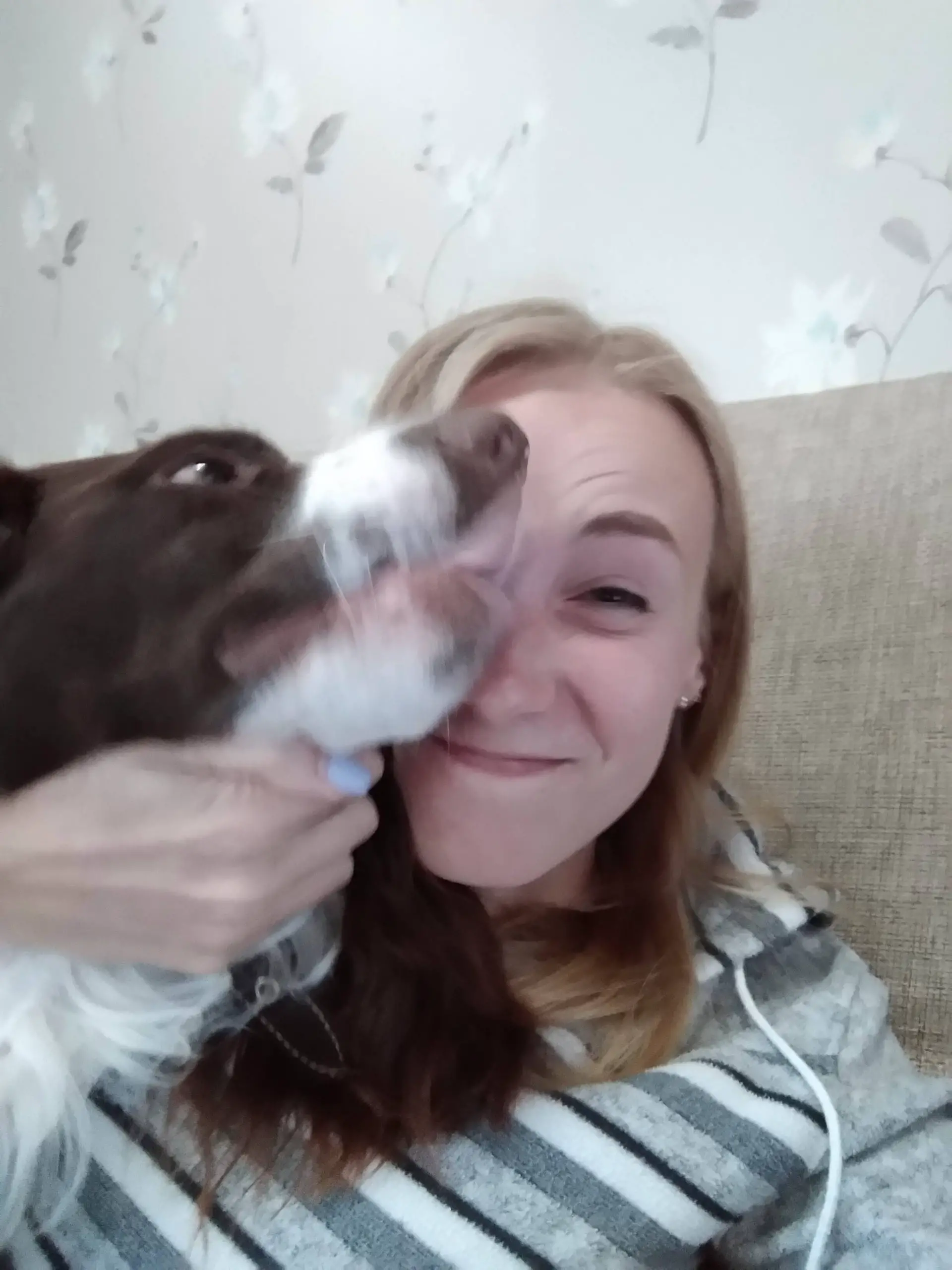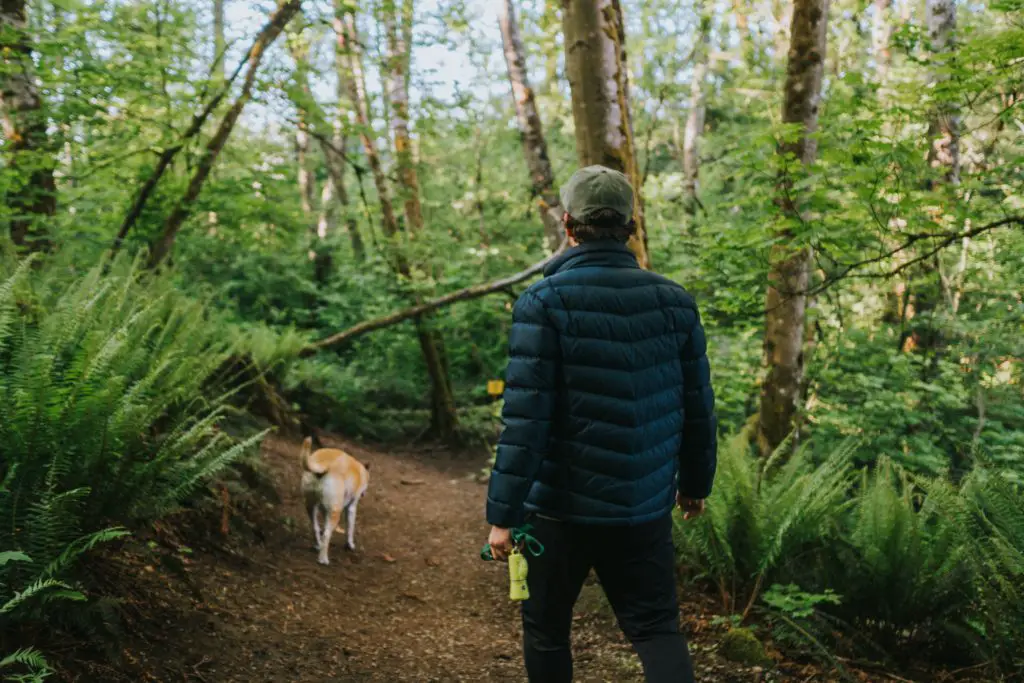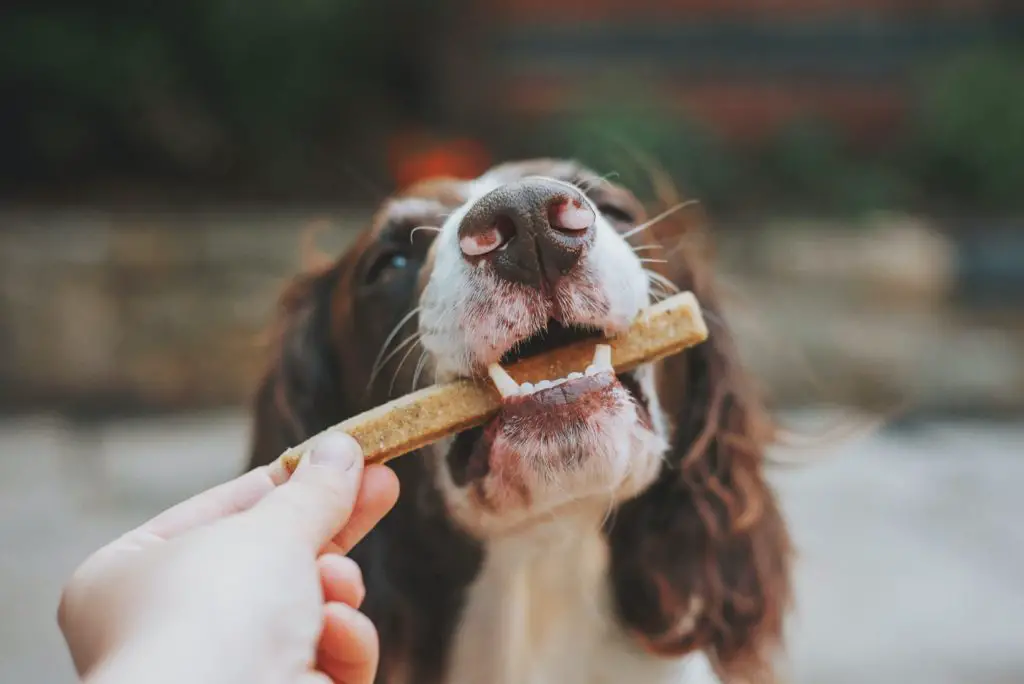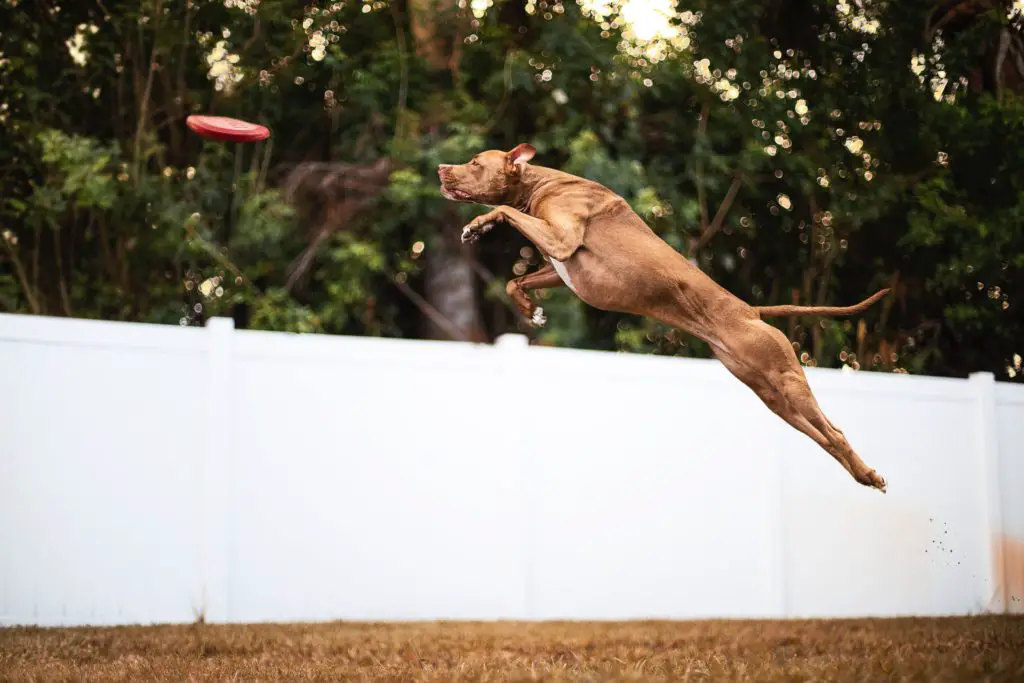Dog owners across the world spend countless amounts of time and money searching for dog collars that are attractive and perfect for their canine companion. However, many owners accidentally fit the collar incorrectly, making it too tight or too loose.
How tight should a dog’s collar be? The best thing to do is to see how many fingers you can fit between the collar and the dog’s neck.
- One finger on the necks of small breeds so that the collar doesn’t become too loose.
- Two fingers on the collars of most dogs and medium-sized breeds so there is just enough of a gap.
- Three fingers on the collars of larger breeds with thicker necks that may need a little more room.
It is important to get that ideal fit. So, how tight should dog collars be and how can you tell if yours is incorrectly fitted?
How Tight Should A Dog’s Collar Be?
The simple answer here is that a dog collar should be comfortably close-fitting but not too snug. A dog collar should be tight enough that it is secure enough to avoid hazards and strangulation, but also loose enough not to injure the animal or cause skin irritation. You need to limit the gap between the collar and neck to avoid the risk of injury but also can’t go too tight and make the dog uncomfortable. An examination of the collar and dog’s neck should flag up any issues before they become dangerous.
How Do I Know If My Dog’s Collar Is Too Tight?
There are two approaches that you can take when determining whether or not a dog’s collar is too tight. You can,
- perform a physical examination of the fit of the collar and,
- check your dog’s neck for signs that the collar may be too tight.
You must carry out these tests on your pet whenever you fit a collar – whether it is an existing collar they use every day or a new one. New collars can feel tighter, especially if they are made from stiff leather and need a little time to soften up. So, it helps to pay attention to the fit every time you use it. If you are careful about checking the fit each time, there is less of a risk that there will be any signs of damage to the neck. But, it is still important to keep these in mind.
How can you tell a flat collar has been properly fitted?
This where that physical examination comes into play. The best thing to do is to see how many fingers you can fit between the collar and the dog’s neck. Too many and the collar is too loose. Too few and the collar is too tight. You may see guides talking about the standard two-finger rule. However, this is a generalization. The best rules to follow are as follows.
- One finger on the necks of small breeds so that the collar doesn’t become too loose.
- Two fingers on the collars of most dogs and medium-sized breeds so there is just enough of a gap.
- Three fingers on the collars of larger breeds with thicker necks that may need a little more room.
While doing all of this, it helps to do some safety checks on the collar to ensure the best fit. For example, you need to be sure that the fastening is secure. This means the clip is in place or that the buckle is fully done up. Also check your dog’s collar for wear regularly, as you don’t want it snapping if they pull on their leash. The leash rings and tags should also be secure.
What Happens If A Dog’s Collar Is Too Tight?
Then there is the physical examination of the neck of the dog. You shouldn’t have to do this too often if you are sure of a good fit every time you put their collar on them. However, there are risk factors relating to tight collars. Some dogs will develop skin irritations where the collar rubs against the skin. This could even lead to abrasions and infections if they go unnoticed. In other cases, you might notice some bare patches of fur where the hairs have been rubbed away. This can be very uncomfortable for the dog and may require treatment in the future.
Can Your Dog’s Collar Be Too Loose?
With so much emphasis on a dog’s collar being too tight for comfort or safety, owners can overlook the issue of collars being too loose. That is why there are those rules with the number of fingers between the collar and the skin. If you can put three fingers underneath then there might be enough room for foreign objects and other risk factors. A collar that is too loose can get caught on branches and other hazards, which could lead to injury or even strangulation. Exceptionally loose collars could even work their way free, putting the dog in a position to run away.
Do Collars Bother Dogs?
There are always going to be questions and concerns about dogs wearing collars because we worry that they are a burden. A good collar shouldn’t be that noticeable to a dog. It should fit well but also be light enough not to weigh them down. Dogs that get used to wearing collars often from a young age are also less likely to be bothered when you put a collar on them in the future. Still, that doesn’t mean that your dog will love any new collar from day one. They may be confused by the feel or the new smell for a little while.
Should Dogs Wear Collars 24/7?
This is a subject that divides opinion and one that we go into more detail on in our guide on whether dogs should wear collars all the time. There are lots of dog owners that have their pets wear collars only when it is essential – such as going out for a walk – while others use them all the time for security and convenience. You might find that the best approach is to take it off at night and keep it on during the day.
Conclusion
In short, a dog collar should be tight enough that it is secure enough to avoid hazards and strangulation, but also loose enough not to injure the animal or cause skin irritation. As long as you are careful to feel under the collar for that two-finger gap (or one or three fingers depending on the breed) you should avoid the risk of ill effects and keep your dog safe and comfortable.

My name is Katie, and I have had different pets at home for as long as I can remember. While I can definitely say I love all animals in general, my heart belongs to cats and dogs. I know you are supposed to choose one or the other, but I could never really decide. I’ve also owned hamsters and fish when I was a kid, and they filled my childhood with very delightful memories.




